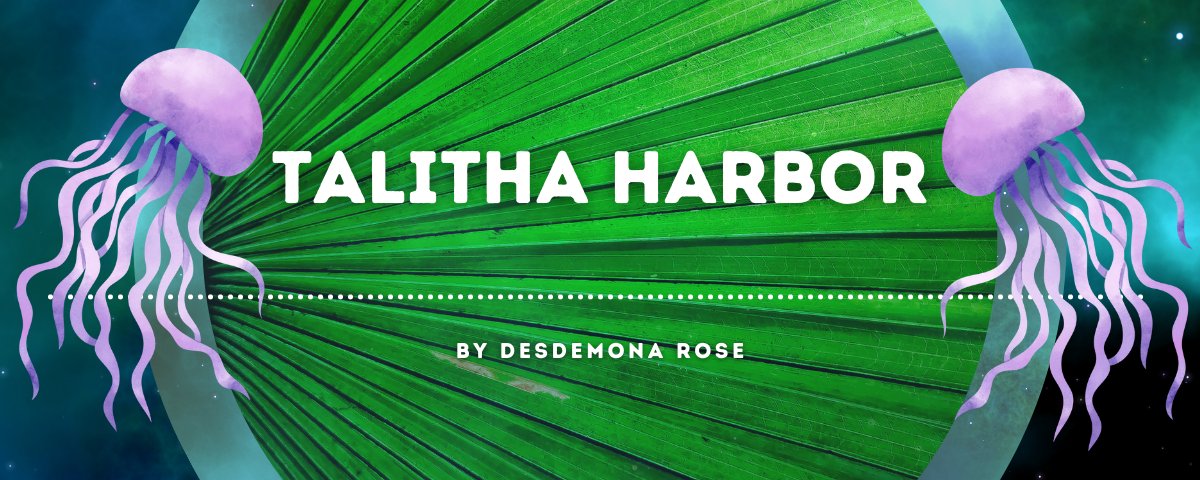Banana Beetle
Banana Beetles were discovered early in Talitha’s history. A small, for Talitha, palm sized beetle that is primarily yellow with small brown spots. When the Talithans landed, they needed names for a countless number of plants, animal, land features, etc. So, they reused a lot of Earth names. The banana beetle was named after the Earthian fruit.
Basic Information
Anatomy
Banana beetles will grow up 7 cm long. They have fairly round bodies with bumpy backs. The bumps are tiny and the beetle has a rough rock texture to it due to the rough carapace. They have six stout legs, which are the same yellow as their top. They have short brown and yellow antenna.
They are omnivorous eating whatever comes across their path. Their mandibles are not particularly long, but they are sharp. However, it’s rare for them to bite humans. Their preferred method of self defense is to either tuck their legs under their shell and sit like a rock, or to open their carapace and glide off with a pair of thin transparent wings underneath.
Banana beetles have small hooked feet that will let them climb up rough surfaces, like tree bark.
Growth Rate & Stages
Banana beetles follow the typical arthropod lifecycle of egg, larva, pupa, and adult.
Their eggs are very tiny and almost impossible to find, a pale brown that blends in easily with soil and ground litter. As larva, they are round and mostly brown, but some will have thin yellow stripes in a few places on their bodies. During the early stage of pupa they look like small brown balls, almost oversized eggs. But, as their body forms, the pupa will turn yellow. The brown spots don’t show until they have emerged and their carapace has fully hardened.
Banana beetles can be prolific with the right environment, but they require specific temperatures and will only breed in the autumn. They slowly develop from egg, to a fattened larva, then pupa throughout winter. Once the ground warms enough, they’ll emerge and harden into beetles.
Banana beetles have never been found in Pangu, or even a similar species. It’s theorized that the weather on the southern continent doesn’t stay cold long enough for them to properly go through their lifecycle stages.
Ecology and Habitats
Banana beetles can be found throughout most of the continent of Anunitum and the southern parts of Simmah. They are more common in the forested areas, but they have wondered into the cities. The only area they seem to avoid completely is the beach.
Behaviour
The beetles are a slow moving and mostly solitary species. They are not, however, aggressive and will share their space with their own kind and other arthropods. Their main defense is their hardened shells and their slow movements, which don't attract the attention of the more sight centric predatory creatures.
A round yellow beetle with bumpy brown spots bumbled as quickly as it could around the corner of a small market. Right behind it ran a skinny child with short, chopped chestnut-brown hair. The thick carapace of arthropod split and its wings made a rapid clicking noise as it lifted off. It barely made it off of the ground before a pair of quick little tawny hands reached out and grabbed it. “I got it, Rade!” cried Wisp’s excited voice. “Very good.” Rade bent down in front of Wisp, so his eyes met theirs. In a quiet voice he said, “remember what you are supposed to call me?” “Sorry,” Wisp said solemnly. The excitement in their voice quickly rebounded, and te said, “Look, Father, I think it’s a Banana Beetle.” “Banana?” “Yes, I read about it on a library pad. The first ecologist to find one said it looked like Earth bananas. They thought it would be a good way to immordalize a fruit they would never taste.” Rade smirked. “What is immordalize?” Wisp asked. “Immortalize? It’s when you want to honor something forever.”
Geographic Distribution




Comments